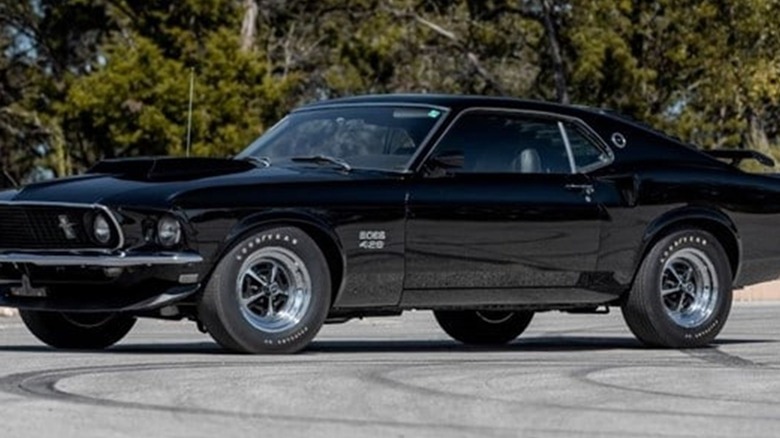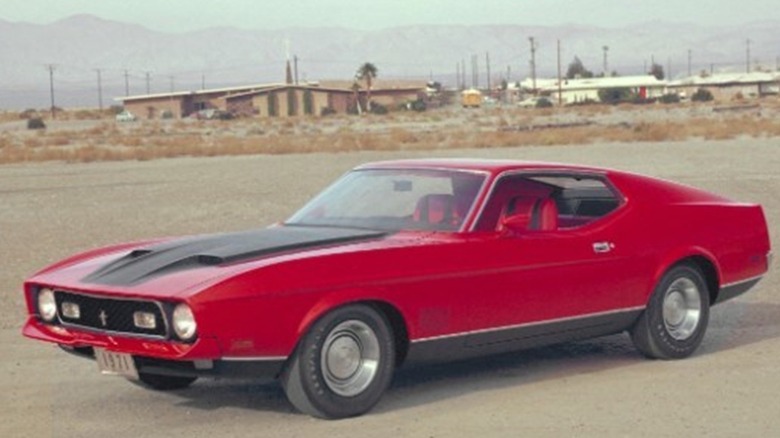Ford Boss 429 Vs 429 Super Cobra Jet Engines: What's The Difference?
The Boss 429 and 429 Super Cobra Jet V8 engines rank as some of the most powerful engines ever put in the Ford Mustang. In fact, if we limit our discussion to first-gen Mustangs, these engines, both rated at 375 horsepower, would reign supreme.
Ford initially approved stuffing the oversized Boss 429 V8 under the hood and between the fenders of select 1969 Mustang Fastback models, creating the Mustang Boss 429 to satisfy NASCAR homologation rules. By offering a street version of the Boss 429 engine to the general public in a limited number of production cars, the Ford racing team was allowed to use the racing version. The Boss 429 was Ford's answer to Chrysler's 426 HEMI that dominated the NASCAR series following Ford's attempt to get its 427 SOHC engine approved for use.
Much like the Boss 429 was developed for use in NASCAR, the Ford Cobra Jet found purpose at the drag strip. Ford began phasing out the dated FE big blocks upon which less powerful Cobra Jet engines were built and introduced the new 385 series in the late 1960s. This gave rise to the new 429 Super Cobra Jet, one of the most iconic big block engines ever built. While both 429 engines offer the same displacement, cylinder head and intake manifold designs set them apart.
Ford Boss 429 and 429 Super Cobra Jet engines have different strengths
It's true that both engines have 4.36-inch diameter cylinders, 3.59-inch crankshaft stroke, and identical displacements using four-bolt main cap engine blocks based on Ford's 385-series engine. However, the Boss 429 block has a unique engine block casting with screw-in freeze plugs.
With its mission rooted in winning NASCAR races, the Boss 429 was fitted with cylinder heads sporting free-flowing intake and exhaust ports and Ford's take on the hemispherical combustion chamber design. The Boss 429 was designed for high horsepower produced in the upper end of its rpm range.
On the other hand, the 429 Super Cobra Jet used wedge heads. Its mechanical lifters and 780-cfm 4150 Holley carburetor set it apart from the standard 429 Cobra Jet and gave it a little more power. Ultimately, the 429 Super Cobra Jet provided more power at lower rpm ranges than the Boss 429. However, Ford's advertised power ratings for its engines are highly suspect and often believed to be published well below actual values due to concerns about insurance rates.

